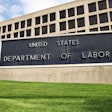
The last eight years brought a remarkable level of regulatory burden on industry in the United States. The past administration passed more than 20,600 new rules and added over 81,000 pages to the Federal Register. The implication of these rules was not minor. Roughly 230 of the rules finalized by the past administration fell under the definition of “major” because they are expected to impose an annual cost of at least $100 million each. The significance of this regulatory expansion made it a central point of discussion during the last election cycle.
Following up on a commitment to examine ways to reduce regulatory burden, the incoming administration issued two executive orders that have a primary goal of advancing regulatory reform. The first executive order will establish a task force charged with evaluating existing regulations and make recommendations on rules that should be repealed, replaced or modified. The second executive order directs all agencies to repeal two existing regulations for each new regulation issued in 2017 and thereafter.
A good start right? – Well not so fast.
In 2005, the U S Poultry and Egg Association (USPOULTRY) led an effort to petition the Environmental Protection Agency (EPA) for an exemption from having to report the emission of ammonia that results from the natural breakdown of manure under the Comprehensive Environmental Response, Compensation, and Liability Act (CERCLA) and The Emergency Planning and Community Right-to-Know Act (EPCRA). In response to the petition, the EPA provided the agricultural industry with a full CERCLA reporting exemption and a partial reporting exemption for EPCRA recognizing the reports would require no emergency response, a principal reason reports are filed.
To be clear, the agricultural community supports the notion that emergency first responders need information that helps them develop emergency response plans. This protocol is delineated in Section 303 of the EPRCA statute and an exemption from reporting would not have restricted local emergency personnel from obtaining this information.
It came as no surprise that the exemption was challenged in court and despite the EPA’s defense that the exemption was appropriate because the reports are pointless, the District of Columbia Court of Appeals chose to interpret each statue in an exceptionally literal way and vacated the exemption. The court’s ruling was disappointing but more so frustrating when it dismissed EPA’s estimate that the Final Rule would save farms more than 1 million man-hours, more than $600 million in compliance costs, and cut out 160,000 hours and $8 million in governmental cost by declaring “such facts (assuming their correctness) are not enough to support” an exemption. This begs the question: What cost and man-hour savings are enough?
So, while the EPA was prepared to provide some level of relief from the burden of un-necessary regulation, which is a good start, the judicial branch delivered a ruling that does not assist with developing emergency response plans – something beneficial to farms and first responders alike. It merely triggers a paperwork exercise that does nothing more than check a box.
To assist poultry and egg operations with the new reporting requirements following this ruling, USPOULTRY has developed reporting guidance documents and reporting forms. These forms can be found on USPOULTRY’s website. In the meantime, while the pathway is not clear, the agricultural community is examining its options to remove a reporting requirement that is hard to justify.














